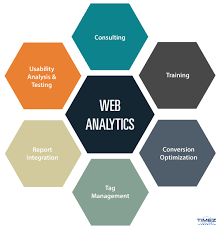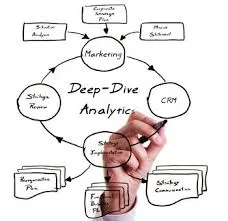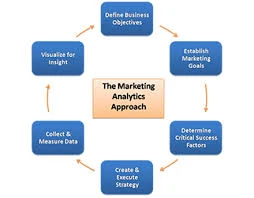There was a time, not so long ago, when marketers assumed a ‘spray and pray’ approach to marketing. They sprayed the marketing budget over the spectrum of media elements – television, print, radio, outdoor etc. – and prayed that their efforts would pay off. And when it didn’t, they sprayed some more and hoped for a better outcome.
Marketing was, by and large, a game of chance. Antecedents and gut-instinct, guided strategy decisions.
But let’s not sit in judgement of yesteryear marketers; they operated under simpler conditions. The consumer was less demanding; competition was limited. Generic messages and homogeneous products, were the order of the day. Mechanisms to collect and track consumer behavior were elementary and predominantly manual. Technology to analyze consumer data was rudimentary and simply not worth the effort.
Personal Computer: the game changer
Such was the marketing milieu, until an innocuous device arrived on the scene. The advent of the personal computer was the water-shed moment in Marketing. Powerful computer networks enabled unprecedented data collection and analysis. The information age, as it were, ushered it a new era of marketing. Computer-aided capabilities made it possible for marketers, large and small, to slice-and-dice data, and uncover nuances of consumer preference and predict purchase behavior.
Consumers too had become more discerning, and were no longer willing to accept a one-size fits all style of marketing – they demanded personalized messages, customized solutions and quicker turnaround. As a result, mass marketing yielded place to segmentation and targeted offer creation.
Competition too intensified. Marketers vied with each other for supremacy, armed with analytical tools, looking to data to give them a competitive edge.
 Enter Big Data Analytics
Enter Big Data Analytics
Data became all-powerful; the coinage ‘Big Data Analytics’ entered the marketing lexicon. Indeed, the marketing landscape had changed dramatically, and marketers were challenged to keep pace.
According to a 2014 CMO survey conducted by The Fuqua School of Business at Duke University, six in 10 professionals reported rising pressure from upper management to be more data-driven, with marketers feeling a majority of the pressure.
And that pressure has intensified even further. Marketers are being held increasingly accountable for spends and analytically informed decisions.
So how are they coping in the new environment? How are they responding to the demands of Big Data Analytics?
According to the Duke University survey, marketing budget allocation is expected to increase from 6% to 10% within three years.
Cultural shift lagging
While spends on sophisticated analytical tools has increased, the study reports that marketers are reticent in deploying analysis in decision-making. Marketers seem to be wary of stepping out of their comfort zone, and are clinging to old practices. Widely, marketing budget allocation continues to be based on historical spends, past successes, thresholds-levels for individual mediums and prior commitments. Few marketers are persuaded by economic value, pay back period, life-time value and other such metrics.
The issues commonly cited by the marketing old guard, are lack of analytical expertise within the team, problems with data quality or simply the lack of time.
That said, marketers universally recognize the power of analytics. Indeed they know that deeper consumer insights, improved targeting, personalized solutions and enhanced customer experience will augment marketing effectiveness. They realize also that analysis is integral to marketing, and as such, a core functional competency.
In fact, the Duke University survey reports that over half (51%) of marketers had plans to invest in in-house analytics.
These are important steps to be sure, but much more is needed. Tools and resources will not work, in the absence of a shift in the marketing mindset. Many marketers are wary of numbers and tend to relegate data-analysis to the ‘nerds’. And when the reports come back, marketers do not utilize them, because often they do not understand them.
Investing in sophisticated analytical tools and hiring resident analysts will be ineffectual, without collaboration between marketers and analysts. Marketers must work closely with analysts and researches to understand the data, challenge assumptions and draw out actionable insights.
The point of data collection and analysis is to act upon insights. Without follow-up action, the data is simply of no value. In the age of Big Data, it is advisable for marketing leadership to formulate an analytics committee, tasked with digging into data, unearthing insights, formulating hypothesis, testing them through marketing activities and presenting outcomes. To underscore the seriousness of the undertaking, senior management representatives should be invited to these presentations.
Indeed an analytics forum would assuage the bean-counters, who at times see marketing spends as reckless and wasteful. Placing data at the heart and center of marketing strategy, would censure the naysayers and fortify marketing’s seat at the organizational decision-making table.
 The Power of Marketing Analytics
The Power of Marketing Analytics
Marketing analytics is fundamentally about shore up the credibility of marketing activities. It is the process of analyzing the effectiveness of marketing programs with a view to accounting for spends, improving efficiencies and optimizing return on investment (ROI).
Analytics is useful in answering questions such as which marketing activities are working, which media channels are effective, which customer segments and product lines are profitable, how performance compares to competition etc.
It can measure past performance and provide benchmarks for present activities. For example, how do results compare with the preceding quarter or the previous year? It can track present performance – how is the campaign performing, which channels are working, which customer segments are responding etc. It can predict the future – what would the growth or sales trajectory look like, which customer segments should be targeted, which products should be added to the portfolio, and such.
The power of analytics lies in its profound insights into customer, competitor and market behavior. Strategically deployed, it can propel marketing to new levels of effectiveness and add tangible value to the organization.
Yet despite the sizeable benefits, many organizations fail to harness the potential of data.
Truth be told, many marketeers are overwhelmed when it comes to data-analysis; they simply do not know where to begin. A good rule of thumb, is to assess where the need for analysis is the greatest and start from there. It is important to take stock of marketing’s analytical capabilities, identify gaps and formulate a plan to fill them.
Without a robust data strategy, the marketing path toward enhanced customer understanding would be arduous. A well-conceived strategy that takes into account analytical capabilities, needs and gaps, and aligns resources accordingly, would steer the marketing function on its course towards sophisticated analysis.
Baby Steps: Digital First
A good starting place for analytics is digital media – the platform lends itself to analytically informed marketing. The company website is the basic building block of digital analytics. Web analytics tools such as Google analytics enable seamless tracking of traffic. The google analytics dashboard furnishes insightful metrics such as top landing pages, page views, most exited pages, average visit duration, bounce rates etc., which help gauge the effectiveness of lead generation efforts and provide a steer for content marketing. Moreover, Google Analytics provides information on referral sites from where website traffic originated – enabling marketers to refine link-building strategies. It also enables filtering and analysis of customer data, providing impetus to customization, personalization and targeting.

Key words are important metrics for search engine marketing efforts. They can inform product design by offering insight into preferred features and functionalities, gleaned from customer searches. Similarly, keyword trends reveal changing customer preferences and pain points, which are critical inputs to marketing strategy. Importantly, paid search campaigns based on relevant keywords, optimize marketing return on investment (ROI).
Powerful as web analytics is, it is not all-encompassing. Analysis of a single marketing channel does not tell the whole story. Marketing analytics must include data from all marketing activities, across channels. Digital marketing analytics, on the other hand, gives a more complete picture of online activities, evaluating data not only from the website, but also from email campaigns, digital PR and social media activities. Digital marketing analytics can gauge the effectiveness of the online marketing mix and institute corrective actions in real-time, thereby improving marketing efficiencies – both spends and results.
Besides that, digital marketing analytics provides invaluable insight into leads and bolsters lead management processes. Add to that predictive analysis and scoring capabilities that qualify and prioritize leads, and increase the odds of sales conversion.
The implication of course is that the CRM system is linked to the digital analytics platform. Analytics is all the more powerful when marketing activity is linked to sales.
Integrated Analytics
Similarly, analytics must link online and offline activities to provide a holistic picture of marketing effectiveness.
Powerful as digital media is , over 70% of marketing spends are allocated to offline channels such as television, print and outdoor. Techniques such as Marketing Mix Modeling (MMM) can be deployed to gauge the effectiveness of traditional media mix elements. Attribution models which link marketing activities to conversion, can be used to calibrate digital spends. Heuristic analysis such as Reach-Cost-Quality (RCQ) can be leveraged to evaluate spends on sponsorship activities and outdoor advertising. Collectively, these tools give a complete picture of marketing effectiveness and empower marketing teams for ongoing success.
With that said, the growing importance of the digital platform cannot be understated. One of the greatest advantages of digital marketing, is that it lends itself to real-time data capture and analytics. At a time when speed and agility are increasingly important, the power of digital media is that campaigns can be refined at short-notice, thereby providing singular control over costs and results.
Comprehensive Data Strategy
As marketers take strident steps towards analytically informed marketing, a comprehensive data strategy must underpin their efforts. Processes must be instituted to gather data from all touch points including point-of-sales systems, social media channels, blogs and online forums and call-center logs. These disparate data sources often yield invaluable nuggets to inform marketing. Moreover, unlike in the past, technology to convert them into marketing insights is readily available. Investing in systems to identify, collect and update data is indeed worthwhile.
So too is investing in a centralized data repository, enabling a holistic view of customer information and deeper customer understanding. Similarly, reporting too must be integrated; fragmented reporting presents a disjointed view of marketing activities and does not reveal the bigger picture needed to impact strategy.
The ideal construct, would be a platform that integrates, measures and reports on the entire gamut of marketing activities.
No doubt the journey will be challenging and issues of data integrity and quality will surface. But that should not deter marketers from staying the course – iterative marketing analytics models will undoubtedly yield robust results, over time.
Challenges notwithstanding, the fruit of the labor is sweet in the age of Big Data. Holistic marketing analysis and analytically informed marketing decisions, will unequivocally give marketers a competitive edge.
Nerds are Hired
The growing importance of Big Data has impacted hiring trends too. Analytics is becoming an increasingly priced skill for marketers. The ability to dig into data, track and measure the effectiveness of marketing campaigns is a non-negotiable requirement these days.
Doreen Bloch, CEO of Poshly Inc., echos the thoughts of upper management, when she says:
“In today’s business climate, marketing hires are expected to have fluency in data and analytics. This proficiency can be demonstrated in many ways, whether it’s expertise with statistical tools, metrics, data analysis or market research insights. Candidates with experience in Google Analytics, email software and website testing tools rank higher for me when it comes to marketing.”
Analytical skills will undoubtedly separate marketing candidate from their peers; the future will belong to those who have the rigor to delve into the details of data.
But critical as analytical skills are, they are not the be-all-and-end-all of marketing. It is equally important to have the business acumen and communication skills to translate data into actionable insights, and the creativity to use that information in the development of products and services.
It goes with saying, that analytical marketers, with good business judgement, communication skills and creativity, will be much sought after in the Information Age.
About the Author:
Sanjita Cariappa is a management consultant and business writer with over 18 years of experience in Marketing, Branding and Communication. She received her MBA from Duke University, USA.

 Enter Big Data Analytics
Enter Big Data Analytics The Power of Marketing Analytics
The Power of Marketing Analytics















